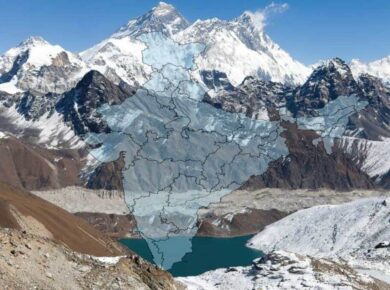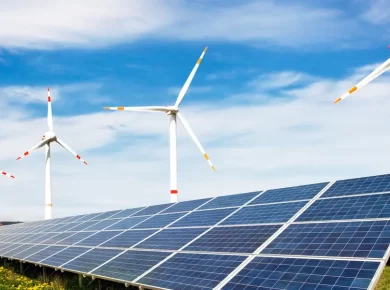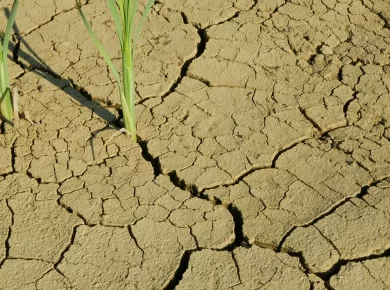Mineral Resources India – Petroleum, Fibers, Natural Gas
Petroleum Refineries
- There are two stages >> Production (drilling) + Refining
- For Petroleum refineries, the raw material sources were less decisive factors for industrial location
- Because industries were already setup in coalfields and did not move away due to industrial inertia.
- Petroleum refining does not lead significant weight loss, unlike aluminum / copper / sugarcane / timber processing.
- Virtually all the by-products can be used. Therefore, refineries can be set up
- Near the raw material or
- Near the market or
- at an intermediate break of the bulk location (Ports/Coastal locations)
At raw material site: Disadvantages
- Refinery will become useless after oil is exhausted from oil well
- So whatever millions of dollars you had invested in setting up that refinery will be wasted
- Oil refining close to production site represents a weight loss of 10-11 % only
- Hence not much cost saving in transport even if located near raw material site
- Refined products have higher rate of evaporation, therefore it is better to set up the refinery near the market
- After 1970s, many of the Middle East and African countries started nationalizing their oil operations
- The ownership of refineries/oil wells were transferred from MNCs to government owned PSUs
- Hence nowadays, MNCs are reluctant to setup refineries in this region for the fear of nationalization
Unrest / Instability as a location factor
- Multinational companies do not feel confident to setup refineries inside the middle-east or South America
- During Arab-Israeli war, OPEC members stopped supplying oil to countries that had supported Israel
- There have been war/war-like situations due to Israel-Palestine conflicts, Iran-Iraq, Iraq-Kuwait
- Such instability, destruction, aerial strike >> not good for business
- In South America, there have been frequent (and violent) changes in the regimes
Refineries at Market Location >> Advantages
- You can use raw material (crude oil) supply from more than one oilfield of more than one country
- So even if oil well is exhausted from country X, you can shift to country Y
- After refining, the finished petroleum products can be supplied to interior areas pipeline connection and trucks/tankers
- In Europe, manufacturing industries also consume a large portion of petroleum products
- Therefore, refineries are also located in major manufacturing centers, where petroleum products are demanded
India Refineries Challenges
- Environmental activism/laws/regulations
- Fears of explosion
- Terrorism
- Hence becoming difficult to setup refineries near market location
Synthetic fibers
Cellulose Fiber
|
True Synthetics
|
Location factor
Input
- The base material for most of the true synthetic fibers is benzene fraction of crude oil
- Benzene >> liquid hence evaporates quickly, hazardous to transport
- Therefore, synthetic fiber factories located near/inside petrochemical industry
Output
- Synthetic fibers >> Non-bulky + Non-perishable >> Easily transported
- Therefore, synthetic fiber industry need not be setup near market location
- Although, with the progress in transport-cargo facilities, nowadays synthetic fiber industry is not always in close proximity with petroleum industry
India – Synthetic fiber industry
- In late 60s, Dhiru Bhai Ambani started Reliance for textile manufacturing at Naroda near Ahmedabad, Gujarat.
- But since polyester is made from petrochemicals, so he entered in Petrochemical business.
- But petrochemical is derived from Petroleum refining, so he moved into Petroleum refining as well.
- Finally, Jamnager refinery set up in Gujarat
- Thus, he achieved complete vertical integration in the supply chain from crude oil to synthetic fibers (even garments via “only vimal” brand)
- Jamnagar refinery provides intermediate raw materials to Reliance’s textile units at Dahej, Naroda, Vadodara in Gujarat
- Similarly, Oil discovery in Ankaleshwar-Sanand-Kalol led to growth of Synthetic textile industry in this region of Gujarat.
Natural Gas
|
Natural Gas Compared to Petroleum |
|
Advantages
|
Disadvantages
|
International Pipeline Projects → India
- Iran-Pakistan-India
- Myanmar-Bangladesh-India
- Turkmenistan-Afghanistan-Pakistan-India (TAPI)
ONGC Hazira, Gujarat |
|
| Input | Natural gas from Bombay High |
| Process |
|
| Output | “Sweet” natural gas is used in
|
| Labour |
|
| Transport |
|
Gail Pipelines |
||
| Jamnagar Loni Pipeline | Vizag Secunderabad Pipeline | |
| Input |
|
|
| Market |
|
|
| Length |
|
|
Reliance KG Basin – Refining done at Kakinada in Andhra Pradesh |
|
| Input | Gas from offshore block in Krishna – Godavari Basin |
| Refining | Onshore Gas Terminal at Gadimoga, about 30 Km south of Kakinada in the state of Andhra Pradesh |
Transportation of Gas
- East West Gas Pipeline (EWPL) transports gas from Kakinada, the landfall point of KG-D6 gas, to Bharuch (Gujarat) and traverses through Andhra Pradesh, Karnataka, Maharashtra and Gujarat.
- From Bharuch, they use the pipeline network of Gujarat State Petronet to take the gas to end-consumers as well as connect to Hazira-Bijaipur-Jagdhishpur (HBJ) pipeline
- Through this entire Pipeline networking, gas reaches to fertilizer plants –
- Tata Chemicals (Mumbai)
- Rashtriya Chemicals & Fertilizers (Trombay)
- IFFCO’s (Phulpur – Allahabad)
- GSFC (Vadodara)
- Kribhco (Hazira & Kota)
Fertilizer Industry alongside Natural Gas
- Urea/ Nitrogen Based industries are located near Natural gas source
- Natural Gas has Methane (CH4), which when mixed with Oxygen, Nitrogen + heat in presence of catalysts produces Ammonia (NH3), known as Haber process
- This Ammonia (NH3) can be used for making nitrogen-based fertilizers e.g., Urea
- Therefore availability (and price) of Natural Gas, affects the location of Fertilizer industry
- Similarly, Neptha (obtained from crude oil) is also used in production of nitrogen based fertilizers, hence proximity to oil refinery is also considered a favourable factor.
- Thanks to oil and gas from Bombay High, the Gujarat-Maharashtra region got fertilizer plants at Hazira, Mumbai, Trombay, Vadodara etc.
- Similarly, Hazira-Bijaipur-Jagdhishpur (HBJ) pipeline >> fertilizer industry in Bijapur, Sawai Madhopur, Shahjahanpur etc.
For more updates, explore the Geography . Feel free to share your thoughts and comments.
If you’re passionate about building a successful blogging website, check out this helpful guide at Coding Tag – How to Start a Successful Blog. It offers practical steps and expert tips to kickstart your blogging journey!







1 comment
thankyou very much to share the knowledge.